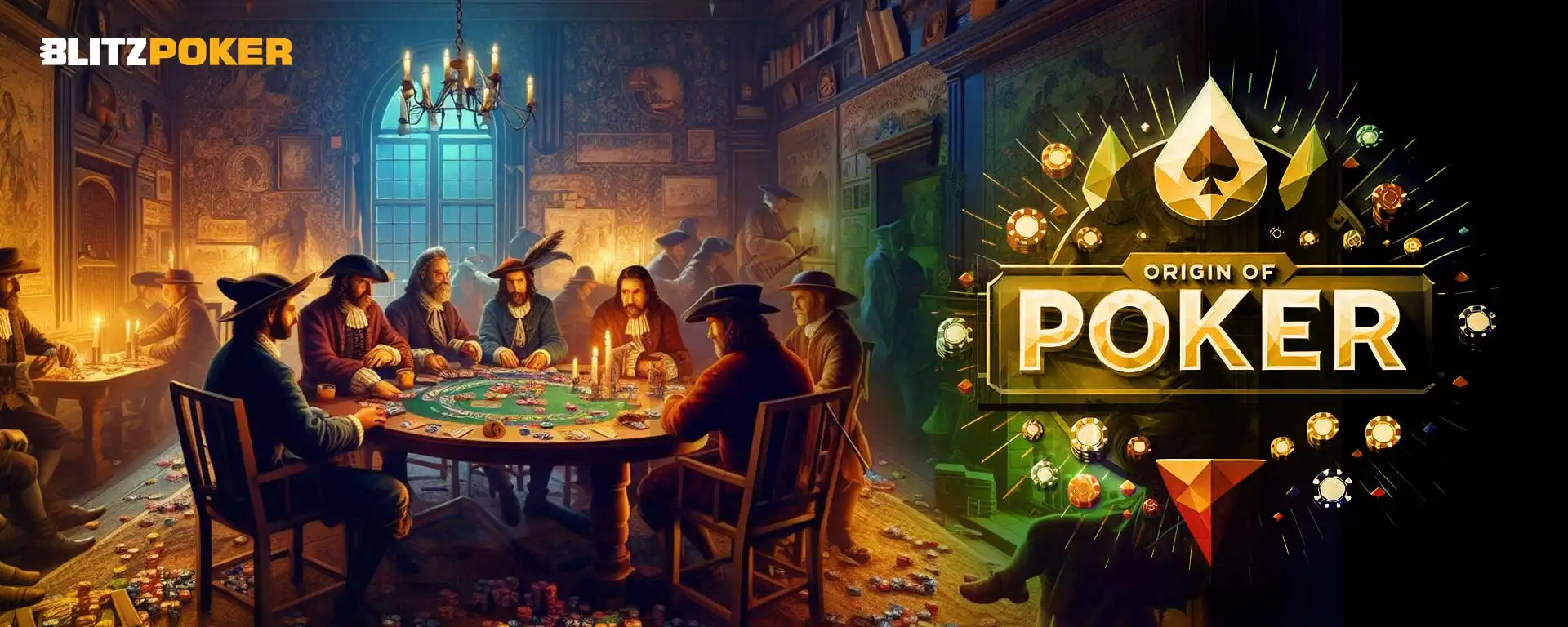Origin of Poker
Now that we’ve discussed the origin of Poker, let’s talk about when it became popular. Poker became popular in the 1970s due to significant developments during that time. The modern tournament style of play gained traction in American casinos, especially after the inception of the World Series of Poker in 1970. Notable figures such as Johnny Moss, Amarillo Slim, Bobby Baldwin, Doyle Brunson, and Puggy Pearson emerged as champions from these early WSOP events. Additionally, the 1970s saw the release of the first comprehensive poker strategy books, including “Super/System” by Doyle Brunson and “Caro’s Book of Poker Tells” by Mike Caro, followed by “The Theory of Poker” by David Sklansky. These publications contributed to the growth of poker’s popularity by providing valuable insights and strategies to players.
How The Game Of Poker Evolved
The origin of poker can be traced back to various card games played across different cultures. In the mid-1800s, decks of cards varied from 20 to 52 cards. A popular game emerged called five-card poker, where players drew cards. A significant addition to the rules was the introduction of the flush, which comprises all five cards of the same suit. Around the 1860s, straight hands, consisting of five sequential cards, were also incorporated.
French sailors enjoyed a game called ‘As’, derived from the Persian ‘As Nas’, where ‘As’ meant Ace in French. ‘As Nas’ involved 20 decks and four players, each dealt five cards. In a variation, ‘As Nas’ included 25 cards with five players.
Players competed using familiar hand rankings, though without straights and flushes. Card rankings were based on classes: Ace, King, Queen, Soldier, and Dancing Girl. ‘As Nas’ featured variations, one with a single deal and another with multiple draws and betting rounds.
Another game, ‘La prime’, derived from the three-card game ‘Primero’, was popular in Spain and France. The best hands included three of a kind, a pair, and a flux or flush. It debuted in Spain in 1525 and was known as ‘Primeira’ in Italy.
Italian decks contained 40 cards with suits like coins, cups, spades, and clubs, along with regional games like Briscola and Scopa. The Germans introduced a bluffing game called Pochen, rewarding cunning, and bluffing. The English adapted Pochen into Brag, which they later brought to America during colonization. This blend of bluffing and crafting laid the groundwork for modern-day Poker.
Origin of Poker: Present-Day Poker Scene
The origin of poker can be traced back centuries, and understanding its history adds depth to the modern-day poker scene. In the 1970s, poker underwent a transformation, gaining widespread popularity thanks to various advancements. The introduction of modern tournaments, particularly the World Series of Poker in 1970, catapulted the game into the mainstream. This surge in interest was further fueled by the publication of strategic guides such as Doyle Brunson’s Super System and Mike Caro’s books, which offered insights into the game’s complexities.
By the late 1980s, poker had firmly established itself in pop culture, even making appearances in popular television shows like Star Trek: The Next Generation. Significant legislative changes also contributed to the poker boom. In 1987, California’s decision to legalise hold’em and Omaha Poker, previously restricted to draw poker, sparked a rapid expansion of poker rooms across the state. Iconic venues like the Commerce Casino and the Bicycle Club emerged, transforming Los Angeles into a hub for poker enthusiasts.
Congress further fuelled the poker frenzy in 1988 with the passage of the Indian Gaming Regulatory Act (IGRA), allowing casino games on Native American lands. This legislation led to the proliferation of poker rooms nationwide. Throughout the late 1980s and into the early 2000s, Seven-Card Stud Poker dominated the East Coast poker scene.
The 1990s witnessed poker’s expansion across the United States, with hotspots emerging in Atlantic City and New Jersey. The digital age brought another milestone with Planet Poker’s launch of the first online poker game for real money in 1998. Additionally, the debut of Late Night Poker on British television in 1999 further popularised the game globally, cementing its status as a cultural phenomenon.
Poker became incredibly popular in the 21st century because of online poker and live tournaments. The World Series of Poker (WSOP) attracted many players, and the extensive coverage turned the pros into celebrities, adding new layers to the professional game.
Today, poker is flourishing in India like never before, marking the dawn of a Golden era for this captivating mind sport, which appeals to both the young and the old.

